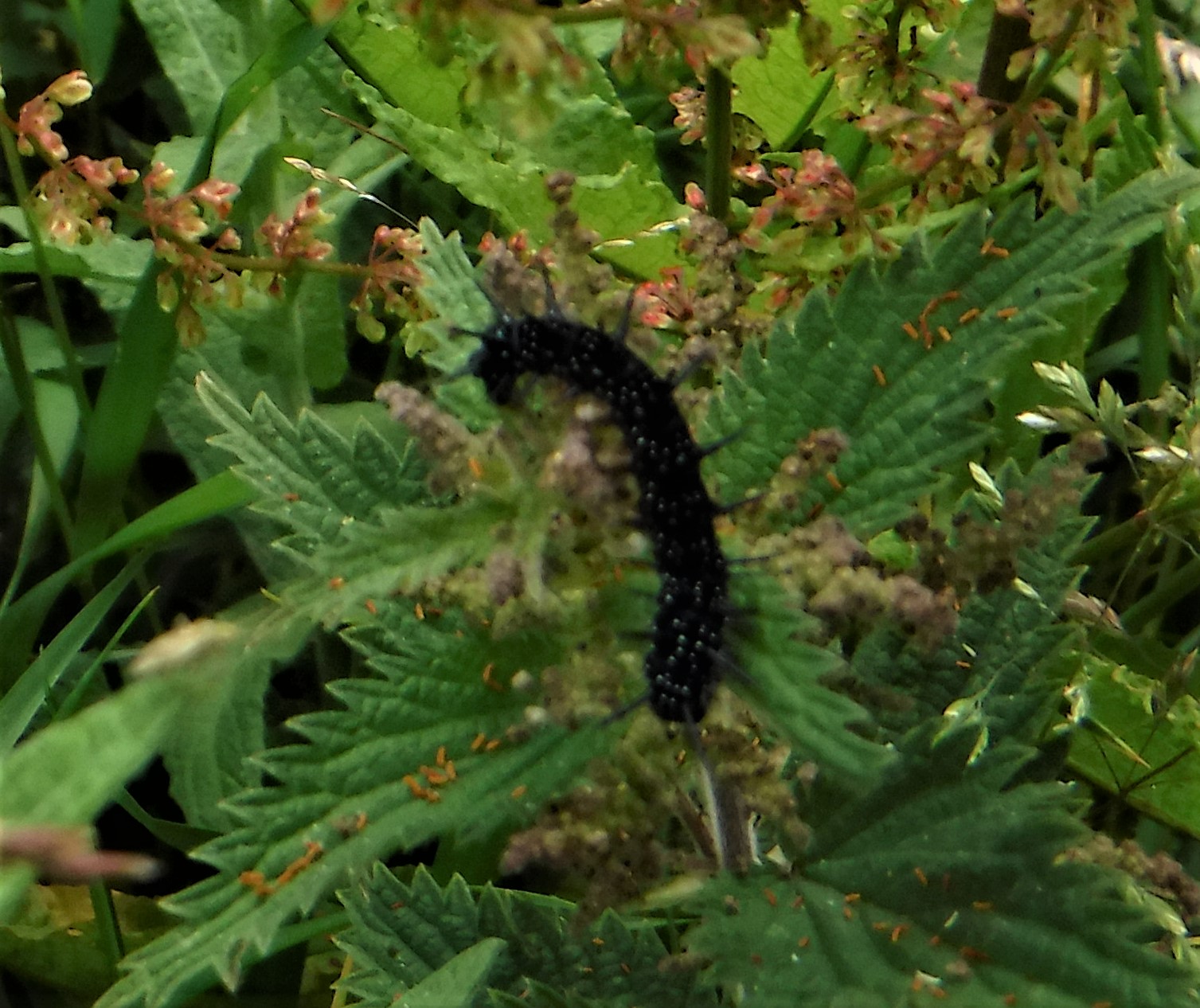
Total monthly rainfall: 34 millimetres. Maximum daily rainfall: 12.5 mm (18th June).
This mediocre rainfall left our ponds at low levels for the time of year, and our soils very dry. Measurable rain fell on 9 days of the month, and there was 100% cloud cover on at least part of 12 days during the month. Maximum temperature was 31°C on June 25th, and there were 16 days when the temperature topped 20°C, but fell to 15°C on the 4th and 15th June. Strong winds on the 5th, 6th,27th, 28th, and 29th brought down small-to-medium sized branches, including a squirrel’s drey.
This month we discovered 17 new species of wildflower blooming during the month, bringing our running total to 55 for the year so far. White clover first showed in the fields on the 5th, closely followed by sow thistle on the 7th. Redshank flowered in the vegetable garden on the 10th; field bindweed among lake-side rushes on the 11th; self-heal in the woodland ride on the 13th, and dark mullein in the garden on the same day. Also in the garden, tall melilot appeared on the 14th, woody nightshade in the woodland pond on the 17th, and marsh willowherb along a drainage ditch the same day. The 18th found hedge bindweed and meadow vetchling around the lake, while water figwort flowered alongside the garden pond. Rough hawkbit produced bright yellow flowers in the meadows on the 22nd; water plantain flowered in the woodland pond on the 27th; hop trefoil bloomed between the garden pond and the horse chestnut tree on the 28th, and finally yarrow in the garden and great willowherb around the lake on the 30th.
-
 A swarm of honeybees in apple tree
A swarm of honeybees in apple tree
A swarm of honeybees in apple tree
A swarm of honeybees in apple tree
-
 Canada geese and three goslings
Canada geese and three goslings
Canada geese and three goslings
Canada geese and three goslings
-
 Peacock caterpillar
Peacock caterpillar
Peacock caterpillar
Peacock caterpillar
-
 Unusual colour-form of white admiral on bramble
Unusual colour-form of white admiral on bramble
Unusual colour-form of white admiral on bramble
Unusual colour-form of white admiral on bramble
https://www.kentfieldclub.org.uk/news/little-barton-farm-wildlife-notes/nature-notes-june-2020#sigProId7b2cca4180
We only saw three more species of butterfly this month, taking our total to 18 – the marbled white in a wildflower meadow on the 17th, and a white admiral in the wood on the 23rd. On 29th June we spotted an unusual colour-form nectaring on bramble blossom. Three small skippers appeared in our eastern meadow on the 24th. We also found a peacock caterpillar on nettle (16th).
There was more success for moth-related species, where 12 new sightings were made this month, beginning with a yellow shell moth in a wildflower meadow and a straw dot moth among water-side rushes on June 2nd. On the 4th we found a green-oak tortrix moth in the woodland ride; one of several grass moths in a flower meadow on the 5th; a brown china mark moth among lake-side rushes on the 10th ; a white china mark moth on the 14th – and a brimstone moth on a garden hawthorn hedge on the 15th. A small ermine moth was seen on a thistle flower-head on the 22nd, and another type of grass moth in a flower meadow on the 25th. On June 26th we found two moths indoors to light – a large yellow underwing in the downstairs sitting-room, and a dwarf cream wave moth upstairs in the bathroom. Finally, on the 27th we found a common white wave moth in the woodland ride – bringing our running total to 27 species. We have to thank Keith Palmer for help with identification of two species of moth.
Three more species of dragonfly appeared during the month, including a ruddy darter and southern hawker at the back of woodland pond on the 23rd, and two common darters at the lake on the 26th.
Other insects included a green shield bug in the vegetable garden (13th), and a forest bug in woodland on the 15th. On a sunny afternoon on June 20th with the temperature at 21°C, we discovered a swarm of honey bees in one of our apple trees. One of our relatives was delighted to collect them.
-------------------------------------------------------------------------------------------------------------------
Several years ago foxes took our domestic geese, leaving us with one white gander. During the past two years he has been brave enough to flirt with some of the female Canada geese when large flocks of geese arrived here in the spring. This year it became serious. The goose he chose always had another goose with her. It acted like a minder – maybe one of her last brood. It stood guard when she and our gander were eating together. The large flock flew off, leaving the two Canada geese with our gander
A large nest was built on our biggest island and on 2nd May, seven goslings began hatching. Crows alerted us to this. They were everywhere, sitting in trees, watching, the three adult geese were incredibly protective. Over the next few days we were delighted to see the tiny goslings, three yellow ones and four grey ones, but we never managed to photograph them as they swam so swiftly surrounded by the three adults blocking our view.
There were many skirmishes as the crows attacked the geese and one by one goslings were taken. Three have survived and are growing fast – one white like our gander and two coloured like their mother, the Canada goose.

